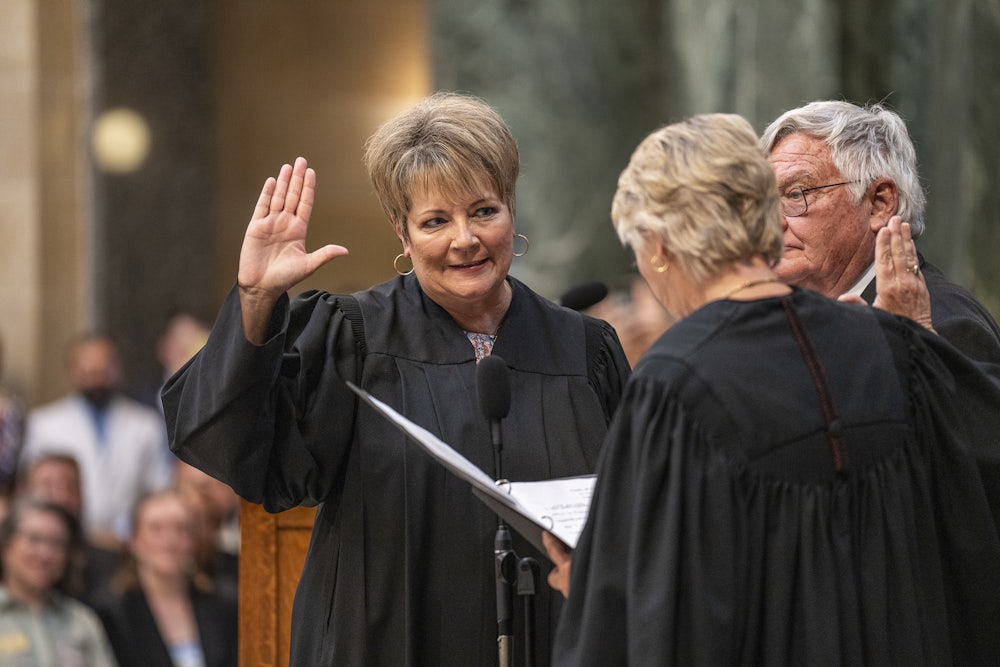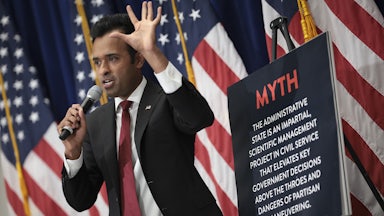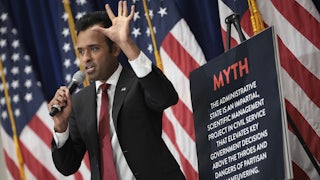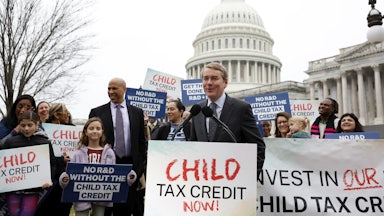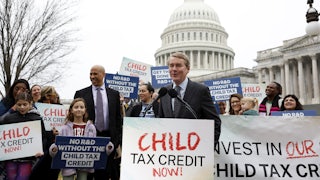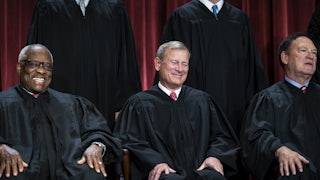If you want to see the warping effects that gerrymandering can have on a state, look no further than Wisconsin. The Badger State is the poster child for what happens when a political party wins one election, draws the maps to entrench itself in power, and then does everything it can to keep itself in office forever.
The latest result is a constitutional showdown between the Republican-led legislature and the state government’s other two branches. The Wisconsin Supreme Court is poised to hear cases soon that could force the creation of new legislative maps, potentially breaking the GOP stranglehold on the legislature—that is, of course, unless the GOP lawmakers can break the court’s liberal majority first.
Things began to accelerate in April after Janet Protasiewicz won the race for a newly vacant seat on the state’s seven-member high court. Protasiewicz, a circuit judge in Milwaukee County and former prosecutor, defeated Dan Kelly, a former state Supreme Court justice, with more than 55 percent of the vote. While the state’s judicial elections are formally nonpartisan, voters had a pretty good idea of the candidates’ ideological leanings: Protasiewicz and her allies ran ads criticizing Kelly for opposing Roe v. Wade and supporting former President Donald Trump.
Protasiewicz’s election was important not only as a bellwether of the post-Dobbs electoral landscape but also for the ideological shift it would bring to the state’s highest court. Her swearing-in in August gave the Wisconsin Supreme Court its first four-justice liberal majority in years. While that shift would affect a variety of issues, most notably abortion rights, it also threatened the defining feature of Wisconsin politics for the last 13 years: the GOP’s unchallengeable control of the gerrymandered state legislature.
That control came about mainly through luck. Republicans were fortunate enough to have a wave election during the 2010 midterms, shortly before that year’s census results gave lawmakers across the country a chance to draw new congressional and state legislative maps. In Wisconsin, North Carolina, and other red or purple states, GOP lawmakers used the opportunity to create districts that would give them a majority of seats in all but the most unlikely electoral circumstances.
The results have been striking. In the 2018 midterms, where a national “blue wave” swept across the electoral landscape, Democrats won 53 percent of the votes cast in the state Assembly races. Thanks to the gerrymandered maps, however, Republicans only lost a single race and came away with control of 63 of the chamber’s 99 seats. Since Wisconsinites are not evenly distributed across the state by political affiliation, GOP mapmakers are able to pack Democratic voters into deeply lopsided districts in Madison and Milwaukee. The result is a map where a few Democrats win their seats with 90 percent of the vote and many Republicans win by around 60 percent of the vote.
Things are even more pronounced in the state Senate, where candidates compete for roughly half of the 33 seats every two years. “In the past two cycles, there were 10 races that were uncontested, seven of which were won by Republicans,” The Washington Post’s Philip Bump noted in his analysis of the state electoral results earlier this week. “Establishing districts where there’s no real threat to incumbents is, of course, one aim of gerrymandering. In the contested races in 2020 and 2022, Republicans won 51 percent of the vote—and 15 of 23 seats. That’s about 65 percent of the seats.”
Since the state legislature has exclusive control over the mapmaking process, only the Republican lawmakers who drew themselves into permanent power could relinquish that power. Federal courts had previously tried to correct extreme partisan gerrymanders themselves on equal protection grounds, but the Supreme Court closed that door in the 2019 case Rucho v. Common Cause. Barring a fundamental transformation of the two major political parties or a seismic shift in American political alignments, GOP control of the Wisconsin state legislature seemed unbreakable.
Then Protasiewicz took office in August. A few days before she was sworn in, a coalition of Wisconsin voting rights groups filed a new lawsuit directly before the state Supreme Court to challenge the legislative maps. Thanks to Wisconsin’s system of judicial elections, voters knew she was a skeptic of the gerrymander before electing her to her current seat. “They do not reflect people in this state,” she told a candidate forum in January. “I don’t think you could sell any reasonable person that the maps are fair. I can’t tell you what I would do on a particular case, but I can tell you my values, and the maps are wrong.”
Those comments also gave Republican state lawmakers a pretext to defend their privileges. Multiple members, including Assembly Majority Leader Robin Vos, have floated the possibility of impeaching Protasiewicz if she does not recuse herself from the gerrymandering cases. “You cannot have a judge who said, you know, the maps are rigged because she bought into the argument that that’s why we’re winning elections, not the quality of our candidates, and then she sits on that trial acting like she’s gonna listen and hear both sides fairly—that just can’t happen,” he said in a radio interview last month.
The state’s impeachment process is broadly similar to its federal counterpart: The state Assembly brings articles of impeachment, and the state Senate holds a trial on them. Since Republicans control 22 of the Senate’s 33 seats, they would need partisan unanimity to convict and remove her from office. It’s not clear if they have that. But Wisconsin’s process also differs in one key respect from the federal version: An impeached official cannot exercise the duties of their office while they await their trial in the Senate.
That difference raises the possibility that the state Assembly could impeach Protasiewicz with a simple majority vote and that the Senate could then just not hold a trial, effectively suspending her from office indefinitely. That would freeze the state Supreme Court into a 3–3 deadlock on ideological lines, which Wisconsin Republicans may also prefer to an outright liberal majority. It would be a tremendous insult to the electorate that chose Protasiewicz—but, then again, so is entrenching yourself in power through extreme partisan gerrymandering.
Earlier this week, Vos pitched what he framed as an off-ramp of sorts for the brewing constitutional crisis: Wisconsin lawmakers could adopt what he described as the “Iowa model,” in which a nonpartisan commission draws electoral maps and then revises them based on feedback from lawmakers. After the third map is rejected, lawmakers could then draw the maps themselves. Iowa has not had to invoke that final option—but Iowa’s political landscape is also far less fractious and hard-edged than its northern counterpart. The likelihood that Republicans would reject new district lines until they were in charge of the process again is why leading Wisconsin Democrats rejected it out of hand.
“A legislature that has now repeatedly demonstrated they will not uphold basic tenets of our democracy—and will bully, threaten, or fire on a whim anyone who happens to disagree with them—cannot be trusted to appoint or oversee someone charged with drawing fair maps,” Wisconsin Governor Tony Evers said in a statement on Tuesday. “And I’m not going to participate in enabling Republicans in the legislature to keep trying to use and abuse their power to control the outcome of our elections. The people should get to choose their elected officials, not the other way around.”
It’s not immediately clear what pathway the state’s elected leaders will take to get out of this constitutional showdown. But it is clear how they got in this mess: by drawing legislative maps that allowed one party to evade the will of the electorate and undermine the other two un-gerrymandered branches whenever the opposing party controlled them. As long as those maps stay in force, an unaccountable faction of politicians will hold the state’s political system hostage. Of all the terms that can be used to describe that state of affairs, democracy isn’t among them.
